How many of you walking round Faversham have ever wondered how much the town has changed over the past half century or so? Happily not nearly as much as many other similar towns. This is largely due to the designation of a Conservation Area in 1969, one of the very first in Kent. The Civic Amenities Act of 1967 enabled Local Authorities to implement Conservation Areas. It is salutary to remember that listing only started 20 years before, in 1947.
The small exhibition currently on show at the Fleur de Lis Gallery consists of historic 1/8” to 1’0” scale (approx. 1:100 scale metric) architectural drawings of street frontages executed in May 1964 and March/April 1969 by Anthony Swaine (for many years the historic building and conservation area adviser to the Town Council) alongside photographs of the same streets taken by Robin Warren, secretary of the Faversham Camera Club, last summer. The beady eyed amongst you will spot changes here and there – for example, where is the parapet above what is now Barley Mow in Court Street? Several chimneys have disappeared and the entrance door to the National Westminster Bank has moved from right to left.

Measured drawings by Anthony Swaine of the Guildhall, Faversham
Robin decided to make a photographic record after seeing old pics of the town dating from the 1930s on Facebook and realising that there weren’t any of whole streets. His fine photographs are a superb record of the main streets in the centre of Faversham in 2017.
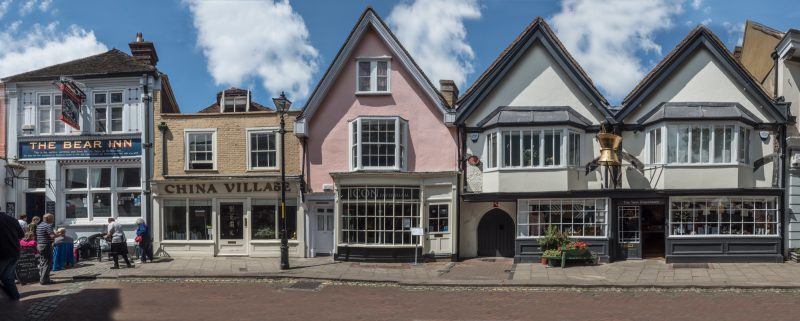
Market Place, Faversham photographed by Robin Warren
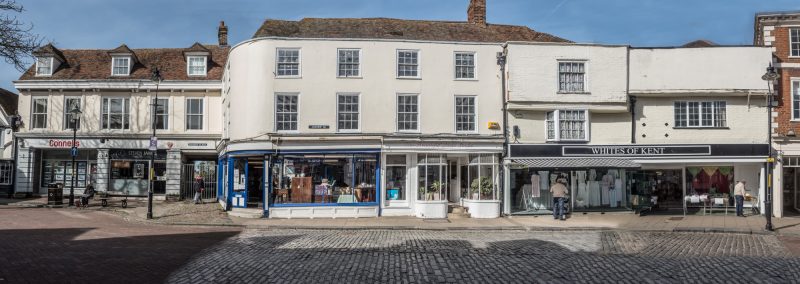
Market Square and the start of Court Street photographed by Robin Warren
He ingeniously used an app to ensure that the sun would be at the right height to accentuate the architectural details. ‘It could only be done in the summer.’ A major impediment was parked cars and pedestrians: ‘It took 4 weeks to photograph the bank in Court Street.’ The narrowness of the streets makes it impossible to photograph more than a building or two in one frame.

Drawings by Anthony Swaine and photograps by Robin Warren
Robin’s solution was to photograph each building in sections, and with the aid of Photoshop join each image together correcting the distortions and adding a happy blue sky. ‘It took about 16 shots to make each picture.’ Prints of the photographs are for sale at the exhibition.

West Street, Faversham photographed by Robin Warren
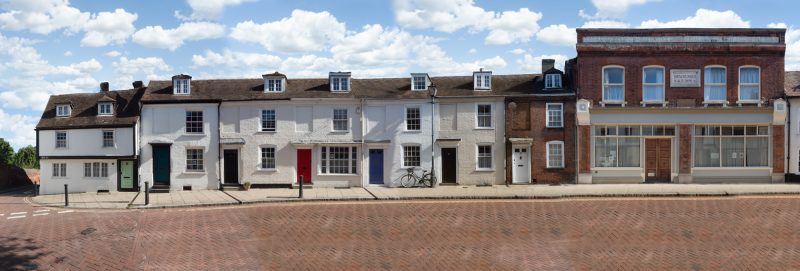
West Street, Faversham photographed by Robin Warren
Fortuitously, the incipient conservation movement of the 1960s had some doughty champions in the town who we should all raise a glass to. There is an extensive gazetteer entitled ‘Conserved’ (available from the Fleur de Lis), complied by Anthony Swaine in 1969 for the Borough Council and County Council, of the many notable buildings, along with recommendations on how the town should be conserved. It is astonishing to see the woefully parlous state of many of the buildings in Abbey Street. Today it is impossible to believe that it was once regarded as a slum. There were even plans to bulldoze it in the late 1950s.
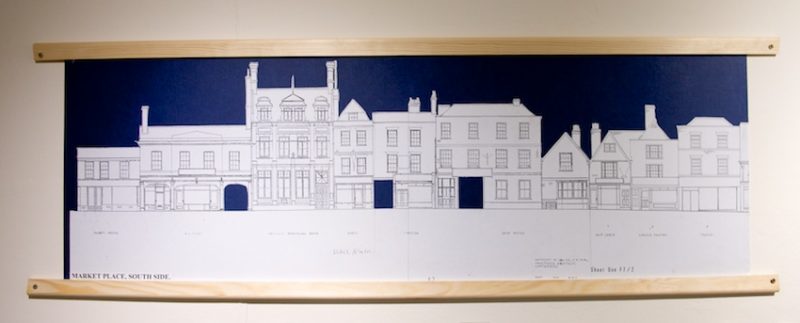
Drawing by Anthony Swaine of theMarket Square, Faversham.
About the same time as the Conservation Area was implemented, a ‘Town Scheme’ was introduced, offering grants for specified repairs to historic buildings within the Conservation Area. Many of Anthony Swaine’s measured drawings were used for grant applications.

West Street, drawn by Anthony Swaine
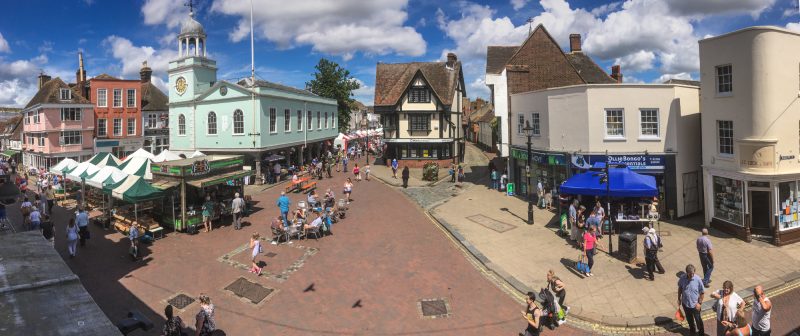
The beating heart of Faversham which radiates out from the Guildhall in the centre of Market Square. Photographed by Robin Warren
It is the pleasing mixture of different architectural styles, the textures, the different colours and the little details that make Faversham such a beguiling market town, combined with the propitious streetscape radiating out from the Market Place in the centre of the town.
Faversham Streetscape runs until the 28 January.
Fleur de Lis Gallery
13 Preston Street
Faversham ME13 8NS
Text: Amicia. Photographs: Robin Warren and Lisa Valder